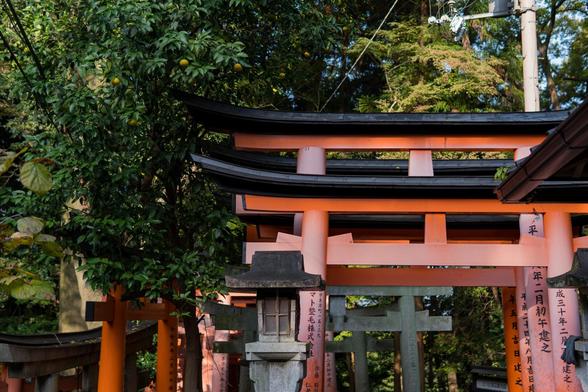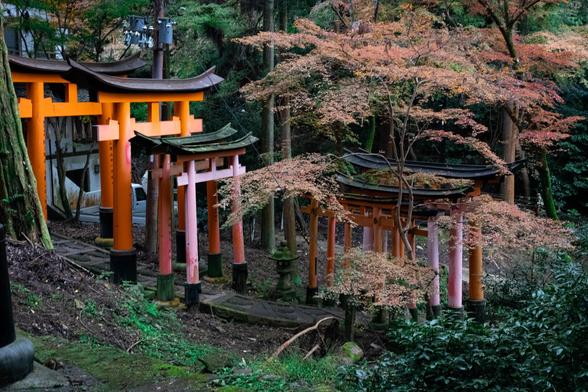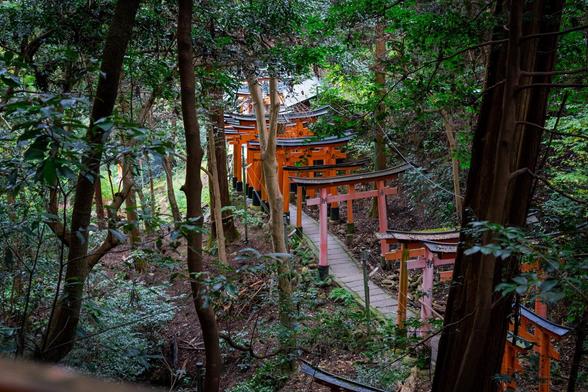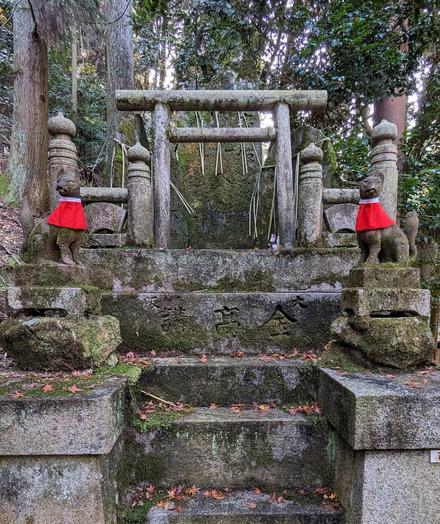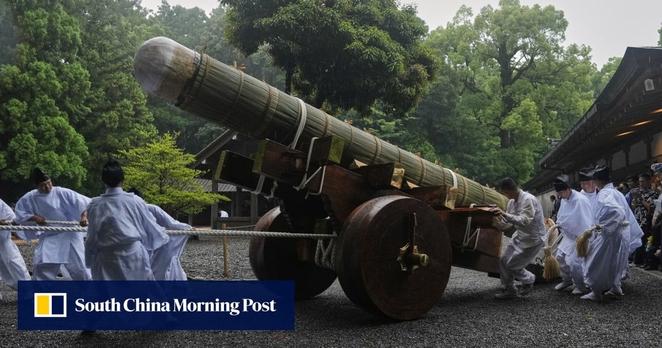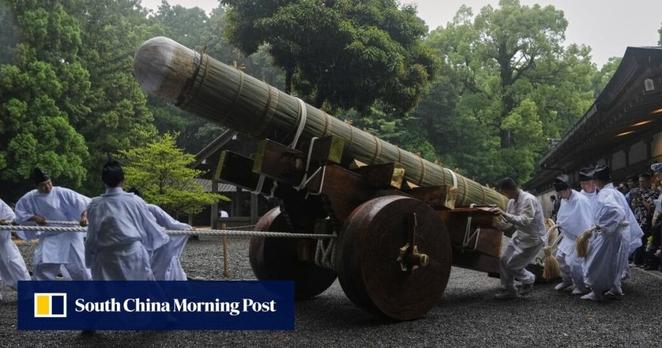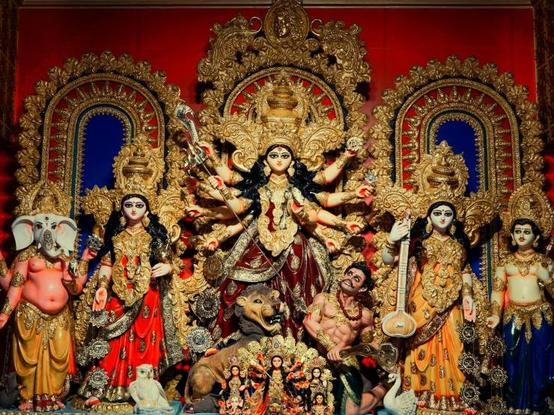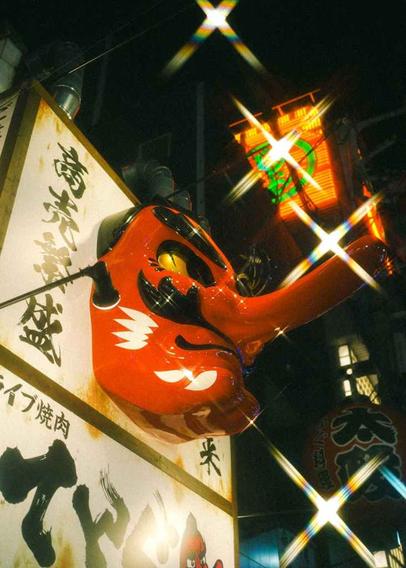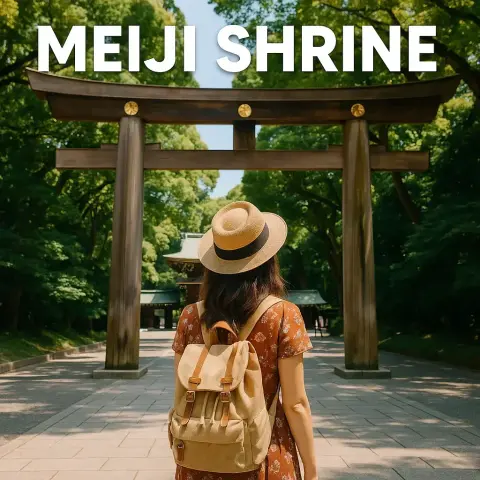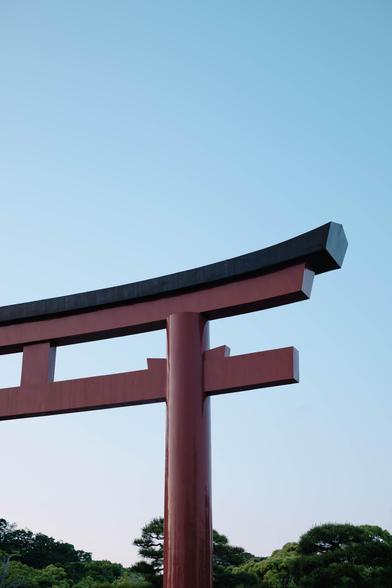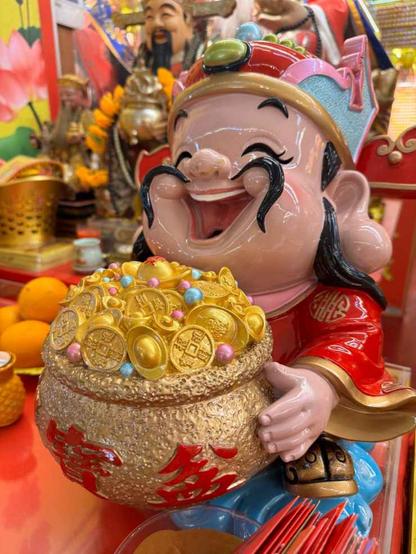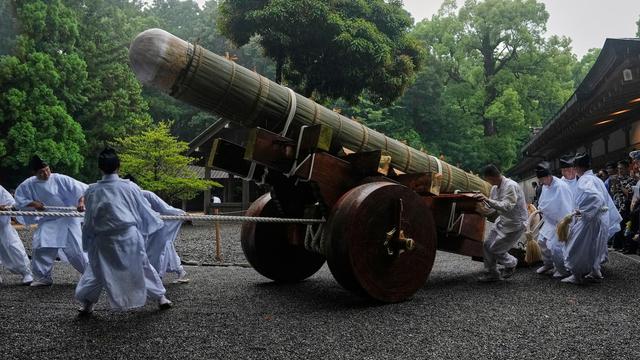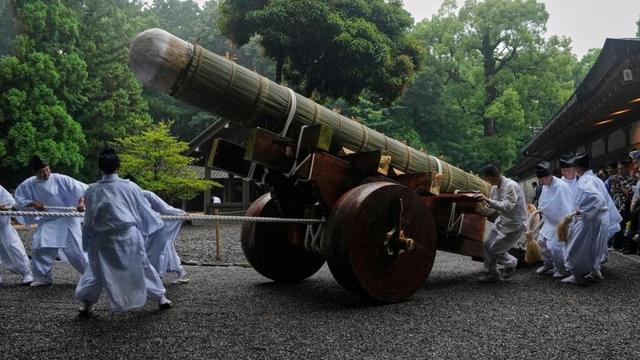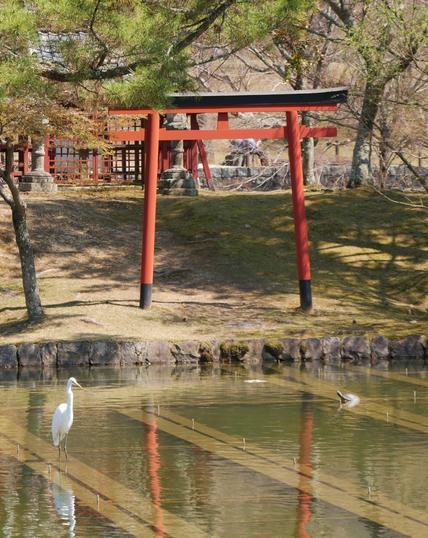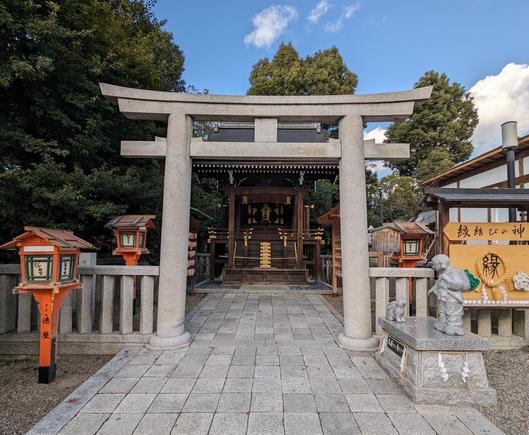Timely reminder
A pure practice doesn't exist.
rustyring.blogspot.com/2025/10/time...
#hermitpractice, #Japan, #Shinto, #Zen
Timely Reminder
#shinto
Timely reminder
A pure practice doesn't exist.
Timely reminder
A pure practice doesn't exist.
📍Fushimi Inari Taisha, Kyoto, Japan
#Photography #travel #sony #travelphotography #kyoto #japan #nature #shinto #architecture #nature #trees #scape
Fushimi Inari Taisha in Kyoto. #ToriiTuesday #Shinto #kitsune #Japan
This sacred shrine in Japan has been destroyed and rebuilt every 20 years for 1,300 years
Deep in the forests of the Japanese Alps, Shinto priests keep watch as woodsmen dressed in ceremonial white cho…
#Japan #JP #JapanNews #Amaterasu #EmpressJito #harvard #IseJingu #KogakkanUniversity #MiePrefecture #MioriInata #news #NoboruOkada #Shinto #shintoshrine #Shrine #YukioLippit
https://www.alojapan.com/1384529/this-sacred-shrine-in-japan-has-been-destroyed-and-rebuilt-every-20-years-for-1300-years/
https://www.alojapan.com/1384529/this-sacred-shrine-in-japan-has-been-destroyed-and-rebuilt-every-20-years-for-1300-years/ This sacred shrine in Japan has been destroyed and rebuilt every 20 years for 1,300 years #Amaterasu #EmpressJito #harvard #IseJingu #Japan #JapanNews #KogakkanUniversity #MiePrefecture #MioriInata #news #NoboruOkada #Shinto #ShintoShrine #Shrine #YukioLippit Deep in the forests of the Japanese Alps, Shinto priests keep watch as woodsmen dressed in ceremonial white chop their axes into two ancient cypress trees, timing their swings so that th
Tridevi
This is a trinity of supreme divinity in Hinduism. This joins a triad of well-known goddesses of the Trimurti, or as consorts of a masculine Trimurti. This depends on the denomination of Hinduism. This triad is typically personified by the Hindu goddesses Saraswati, Lakshmi, & Parvati. In Shaktism, these triune goddesses are the manifestations of Mula-Prakriti or Mahadevi. Triune means “3 in 1″ or 3 united in 1.”
In traditional masculine/male-centered (androcentric) denominations of Hinduism, the female Tridevi goddesses are relegated as consorts & auxiliary deities to the male/masculine Trimurti gods.
In Shaktism, the female/feminine Tridevi goddesses are given prominent roles of creator (Mahasaraswati), preserver (Mahalakshmi), & destroyer (Mahakali). In this sect, the male/masculine Trimurti God’s being put into auxiliary deities as agents of the female/feminine Tridevi.
Saraswati is the goddess of learning, acts, & music. She’s also the consort of Brahma, the creator.
Lakshmi is the goddess of fortune, wealth, fertility, auspiciousness, light, material & spiritual fulfillment. She’s the consort of Vishnu, the maintainer or preserver. Lakshmi doesn’t signify mere material wealth, but also abstract prosperity, such as glory, magnificence, joy, exaltation, greatness, & spiritual fulfillment. This translates to moksha. Moksha is liberation or release from the cycle of life, death, rebirth.
Parvati is the goddess of power, war, beauty, & love. She’s the consort of Shiva, the destroyer of evil, or transformer.
Mahasarasvati is described to be the slayer of Shumba in Devi Bhagavata Purana. This suggests that she has little to do with Saraswati.
Mahalakshmi is the prosperity aspect of Devi. She has 2 forms, Vishnu-priya Lakshmi & Rajyalakshmi. The former is the embodiment of chastity & virtuousness. The latter goes about courting kings.
Rajyalakshmi is stated to be fickle & impulsive. She enters all those places where virtue & charity may be found. As soon as these 2 vanish from any place, Rajyalakshmi will also vanish from that place.
Mahakali represents darkness, pure tamas personified. Mahakali is 1 of the 3 primary forms of Devi. She’s stated to be a powerful cosmic aspect (vyasti) of Devi & represents the guna (universal energy) named tamas, & is the personification of the universal power of transformation, the transcendent power of time.
Via Buddhism & syncretism with Japanese Shinto deities, the Tridevi entered Japanese mythology as the goddesses Benzaitennyo (Sarasvati), Kisshoutennyo (Lexmi), & Daikokutennyo (Mahakali or Parvati).
One-Time Monthly YearlyMake a one-time donation
Make a monthly donation
Make a yearly donation
Choose an amount
$1.00 $5.00 $10.00 $1.00 $5.00 $10.00 $5.00 $10.00 $15.00Or enter a custom amount
$Your contribution is appreciated.
Your contribution is appreciated.
Your contribution is appreciated.
DonateDonate monthlyDonate yearly
#Androcentric #Benzaitennyo #Brahma #Buddhism #Consorts #Daikokutennyo #Devi #DeviBhagavataPurana #Guna #Hindu #HinduMythology #HinduTridevi #Hinduism #HinduismPantheon #Japanese #JapaneseMythology #Kisshoutennyo #Lakshmi #Mahadevi #Mahakali #Mahalakshmi #Mahasarawati #MulaPrakriti #Parvati #Rajyalakshmi #Saraswati #Shaktism #Shinto #Shiva #Tamas #Tridevi #Trimurti #Trinity #Triune #Vishnu #VishnuPriyaLakshmi #Vyasti
Tengu
Tengu literally means “Heavenly Dog.” These are a type of legendary creature found in the Shinto belief. They’re considered a type of yokai (supernatural beings) or Shinto kami (gods or spirits). The tengu were originally thought to take the forms of birds of prey & a monkey deity. They were traditionally shown with human, monkey, & avian/bird characteristics.
Sarutahiko Okami is considered to be the original model for Konoha-Tengu. This is a supernatural creature with a red face & long nose. Today, this is widely considered the tengu’s defining characteristics in popular imagination.
He’s the Shinto monkey deity who’s said to shed light on Heaven & Earth. Some experts theorize that Sarutahiko was a sun god worshipped in the Ise region prior to the popularization of Amaterasu.
Buddhism had long held that the Tengu were unruly demons & harbingers of war. Their image gradually softened into 1 of protective, if still dangerous spirits of the mountains & forests. Tengu is associated with the ascetic practice of Shugendo. They’re usually shown in the clothes of its followers, the yamabushi.
The tengu appears in a variety of shapes in art. It usually falls somewhere in between a large, monstrous bird & a wholly anthropomorphized being. It’s often with a red face or an unusually large or long nose.
The early representations of tengu show them as kite-like beings who can take a human-like form. Often they keep avian/bird wings, heads, or beaks. This feature allies with the Sarutahiko Okami. Sarutahiko Okami is described in the 720 CE text, the Nihon Shoki, with a similar nose measuring 7 hand-spans in length. In village festivals, the 2 figures are often nose-portrayed with identical red phallic-nosed mask designs.
Tengu are often shown as taking the facade of a priest. Beginning in the 13th century, tengu came to be associated in particular yamabushi. These were the mountain ascetics who practiced/practices Shugendo.
This eventually found its way into Japanese art, where tengu are frequently shown in the yamabushi’s unique costume. The costume included uncommon headwear called the tokin & a pompom sash (yuigesa). Because of their priestly aesthetic, they’re often shown employing the khakkhara. This is a distinct staff used by Buddhist monks, called a shakujo in Japanese. Tengu are commonly shown holding a magical feather fan (hauchiwa).
In folk tales, these fans sometimes can grow or shrink a person’s nose. But usually they’ve attributed the power to stir up great winds.
The Konjaku Monogatarishu is a collection of stories, that was published in the late Heian period. It has in it some of the earliest tales of the tengu. These tengu are troublesome opponents of Buddhism, who mislead the pious with false images of the Buddha, carrying off monks, & drop them in remote places, possess women in an attempt to tempt holy men, rob temples, & gift those who worship them with unholy power. They often disguise themselves as priests as priests or nuns. But their true form seems to be that of a kite.
One infamous tengu from the 12th century was himself the ghost of an emperor. The Hogen Monogatari tells the story of Emperor Sutoku. He was forced by his father to abandon the throne. When he later raised the Hogan Rebellion to take back the country from Emperor Go-Shirakawa, he was defeated & exiled to Sanuki Province in Shikoku.
According to legend, he died in torment, having shown to haunt the nation of Japan as a great demon. Thus becoming a fearsome tengu with long nails & eyes, like a kite’s.
In stories from the 13th century, tengu began to abduct young boys, as well as priests that they’ve always targeted. The boys returned, while the priests would be found tied to the top of the trees or other high places. All of the tengu’s victims would come back in a state near death or madness. Sometimes after having been tricked into eating animal dung/poop.
The tengu of this period were frequently conceived of as the ghosts of the arrogant. As the creatures have become associated with vanity & pride. Today, the Japanese expression tengu ni naru (“becoming a tengu”) is still used to describe a conceited person.
One-Time Monthly YearlyMake a one-time donation
Make a monthly donation
Make a yearly donation
Choose an amount
$1.00 $5.00 $10.00 $1.00 $5.00 $10.00 $5.00 $10.00 $15.00Or enter a custom amount
$Your contribution is appreciated.
Your contribution is appreciated.
Your contribution is appreciated.
DonateDonate monthlyDonate yearly
#12thCentury #13thCentury #Amaterasu #BirdsOfPrey #Buddha #Buddhism #BuddhistMonks #Emperor #EmperorGoShirakawa #EmperorSutoku #harbinger #Hauchiwa #HeavenlyDog #HeianPeriod #HoganRebellion #IseRegion #Kami #Khakkhara #Kite #KonjakuMonogatarishu #KonohaTengu #MonkeyGod #Monks #NihonShoki #Priest #SanukiProvince #SarutahikoOkami #Shakujo #Shikoku #Shinto #Shugendo #Tengu #TenguNiNaru #Tokin #Yamabushi #Yokai #Yuigesa
🌸 Step into a world of tranquility at Meiji Shrine in Tokyo! 🌿 Surrounded by lush greenery, this Shinto shrine is a peaceful escape from the bustling city. 🙏 Don't miss the traditional rituals and serene atmosphere. #MeijiShrine #Tokyo #Japan #Shinto #TravelGoals #PeacefulRetreat https://www.japantripideas.com/en/kanto/tokyo/tokyo/attractions/shrines/meiji-shrine
Seven Lucky Gods
In Japanese mythology, the 7 Lucky Gods that are believed to grant good luck & are often represented in netsuke & in artwork. Netsuke is a miniature sculpture, beginning in 17th century Japan. 1 of the 7, Jurojin, is said to be based on an actual historical figure.
These deities mostly have their roots as ancient gods of fortune from religions popular in Japan like: from Mahayana Buddhism (Benzaiten, Bishamonten, Daikokuten, Hotei), which came to Japan via China but began in India; & from Chinese Taoism (Fukurokuju & Jurojin); the last 1 (Ebisu) is has a Japanese native ancestry.
In the beginning, these gods were worshipped by merchants as the first 2 (Ebisu & Daikokuten) were gods of business & trade. Other classes of Japanese society looked for gods that could parallel with their professions: Benzaiten as the patron of the arts, Fukurokuju as the patron of the sciences, etc.
In ancient times, these gods were worshipped separately. This rarely happens today. Only when it’s required for the specific god to act on behalf of the applicant.
The 7 Gods of Fortune started being mentioned as a collective in 1420 in Fushimi. This was in order to imitate the processions of the feudal lords, daimyos, of pre-modern Japan.
It’s said that Buddhist priest, Tenkai, picked these gods after speaking with the shogun he served, Iemitsu Tokugawa. This was at the order of seeking whoever possessed the perfect virtues: longevity, fortune, popularity, sincerity, kindness, dignity, & magnanimity. Shortly after this, Kano Yasunobu, a famous artist of the time.
List of the deities:
- Ebisu: From the era of the gods Izanami & Izanagi, Ebisu is the only 1 whose beginnings are purely Japanese. He’s the god of prosperity & wealth in business, & of plenitude & abundance in crops, cereals, & food in general. He’s the patron of fishermen & is shown with fishermen’s costumes such as a typical hat, a fishing rod in his right hand & a fish that is either a carp, a hake, a codfish, a sea bass, or any large fish. In general, that symbolizes abundance in meals, like a feast or banquet. It’s now common to see his figure in restaurants where fish is served in huge amounts of in household kitchens.
- Daikokuten: He’s the God of commerce & prosperity. He’s sometimes considered the patron of cooks, farmers, bankers, & a protector of crops. He’s also considered a demon hunter. Legend says that the god Daikokuten hung a talisman on the branch of a tree in his garden &, by using this as a trap, was able to catch a demon. This god is known for his smile, his short legs, & the hat on his head. He’s usually shown with a bag full of valuable objects. Daikokuten’s popular imagery started as a syncretic conflation of the Buddhist death deity, Mahakala, with the Shinto deity, Okuninushi. Syncretic conflation is a blending of different belief systems practices or traditions into a new, single, & often confusing or contradictory whole. The Japanese name Daikoku is a direct translation of the Sanskrit name Mahakala, which means “Great Blackness.” Per the Butsuzozui compendium of 1690, Daikoku can also manifest as a female known as Daikokunyo (literally, She of Great Blackness) or Daikokutennyo (literally, She of Great Blackness of the Heavens).
- Bishamonten: Bishamonten’s origins can be traced back to Hinduism. But he has been adopted into Japanese culture. He comes from the Hindu god Kubera & is also from the name Vaisravana. He’s the god of fortune in war & battles. He’s also connected with authority & dignity. He’s the protector of those who follow the rules & behave properly. As the patron of fighters, he was represented dressed in armor & a helmet. He’s often seen carrying a pagoda. He also acts the protector of holy sites & important places & wields a spear to fight against the evil spirits. He’s usually shown in pictures with a hoop of fire.
- Benzaiten: Benzaiten’s origin is found in Hinduism. As she comes from the Hindu goddess Saraswati. She’s the only Fukujin in modern grouping. She’s named in a number of ways: Benzaiten, Benten, Bentensama, or Benzaitennyo. When she was adapted from Buddhism, she was given the qualities of financial fortune, talent, beauty, & music among others. Often she shows up with a Torii. She’s depicted as a smart, beautiful woman with all the aforementioned attributes. She carries a biwa, a Japanese traditional lute-like instrument, & is normally accompanied by a white snake. She’s the patron of artists, writers, dances, & geisha.
- Jurojin: He’s considered the incarnation of the southern pole star, Jurojin, is the god of the elderly & of longevity in Japanese Buddhist mythology. It’s said that the legendary Juroujin is based on a real person who lived in ancient times. He was approximately 1.82 meters (or 5.97 feet) tall with a very long head. Besides his unique skull, he’s shown with a long white beard, riding a deer, & is often accompanied by a 1500-year crane (the bird) & a tortoise. These are symbols of his affinity with long lives. In addition, he is usually represented under a peach tree. The fruit of this tree is considered, by Chinese Taoism, being able to prolong life. In his hand, he holds a crane & a book or a scroll. The wisdom of the world remains written in its pages. Jurojin enjoys rice & wine &is a very cheerful figure.
- Hotei: He’s the god of fortune, guardian of children, patron of diviners, & barmen. He’s also the god of popularity. He’s shown as a fat, smiling, bald man with a curly moustache. He always appears half-naked. His clothes aren’t wide enough to cover his huge belly. He blessed the Chinese. They nicknamed him “Cho-Tei-Shi” or “Ho-Tei-Shi,” meaning ‘bag of old clothes.’ Hotei was a Zen priest. His looks & some of his actions were against their moral code. His looks made him look like a naughty person & he didn’t have a fixed place to sleep. He carries a bag on his shoulders. The bag was loaded with fortunes for those who believe in his virtues. Hotei’s traits & virtues are contentment, magnanimity, & happiness. Hotei’s original Chinese name was Kaishi. According to legend, he passed away in March 916. The Japanese began to believe in Hotei during the Edo era. The reasoning for why the Japanese have such a great respect for this god comes from a legend that says that, before Zen Buddhism came to Japan, an alternative Buddhist thought was extended by a priest of suspicious aesthetic, who was actually was a manifestation of Miroku. Miroku was the patron of those who couldn’t be saved by the beliefs of Buddha. Hotei was later observed & accepted by the Japanese as a 2nd Miroku.
- Fukurokuju: (Sometimes omitted) The god Fukurokuju also has his beginnings in China. It’s believed that he used to be a hermit during the Chinese Song dynasty. He’s distinguished for being a reincarnation of the Taoist god, Hsuan-wu. He’s the god of wisdom, luck, longevity, wealth, & happiness. This god receives certain credits, such as being 1 of the Chinese philosophers who could live without eating called breatharian. He’s the only god who was said to have the ability to resurrect the dead. Fukurokuju is portrayed by the size of his head, being almost as large as the size of his whole body. He’s represented wearing traditional Chinese costumes. He normally carries a cane in 1 hand & a scroll with writings about the world in the other hand. He’s usually accompanied by a turtle, a crow, or a deer. These animals are frequently used in Japan to symbolize a long life. It’s also said that he likes to play chess. He’s the patron of chess players. The characteristics of Fukurokuju & Jurojin overlap as they both trace back to the Chinese Taoist deity. Nanjilaoren, which is why Fukurokuju’s position is sometimes granted instead to the goddess Kichijoten, as in Butsuzosui compendium of 1783. The Butsuzosui compendium is a collection of Buddhist iconographic sketches said to have been painted by Hidenobu Tosa of the Tosa school. Originally published in 1690 in 5 volumes.
- Kichijoten: (Sometimes omitted) She’s also known as Kisshoten or Kisshoutennyo. She was adapted via Buddhism from the Hindu goddess Lakshmi. Kisshoten has the traits of beauty, happiness, & fertility. In the 1783 edition of the Butsuzozui compendium, Kichijoten replaced Fukurokuju as 1 of the Fukujin. Kichijoten’s iconography is distinguished from the other Fukujin goddesses by the Nyoihiju gem in her hand. When Kichijoten replaces Fukurokuju, & Daikoku is regarded in feminine form, all 3 of the Hindu Tridevi goddesses are then represented among the 7 Fukujin.
During the first 3 days of the New Year, the 7 Lucky Gods are said to pilot through the Heavens the Takarabune or Treasure Ship. A picture of the ship forms an essential part of traditional Japanese New Year celebrations.
There are 4 shrines:
- Imamiya Ebisu Shrine, Osaka
- Nanyo Kanjizai, Shikoku
- Nishinomiya Shrine, Hyogo
- Toka Ebisu Shrine, Fukuoka
Make a one-time donation
Make a monthly donation
Make a yearly donation
Choose an amount
$1.00 $5.00 $10.00 $1.00 $5.00 $10.00 $5.00 $10.00 $15.00Or enter a custom amount
$Your contribution is appreciated.
Your contribution is appreciated.
Your contribution is appreciated.
DonateDonate monthlyDonate yearly
#1420 #1690 #1783 #17thCentury #Benten #Bentensama #Benzaiten #Benzaitennyo #Bishamonten #Biwa #Breatharian #Buddha #Buddhism #ButsuzosuiCompendium #China #ChineseTaoism #ChoTeiShi #Daikoku #Daikokunyo #Daikokuten #Daikokutennyo #Daimyos #Ebisu #EdoEra #Fukujin #Fukuoka #Fukurokuju #Fushimi #HidenobuTosa #HinduTridevi #Hinduism #HinduismPantheon #HoTeiShi #Hotei #HsuanWu #Hyogo #IemitsuTokugawa #ImamiyaEbisuShrine #India #Izanagi #Izanzmi #Japan #JapaneseBuddhistMythology #JapaneseMythology #Jurojin #Kaishi #KanoYasunobu #Kichijoten #Kisshoten #Kisshoutennyo #Kubera #Lakshmi #Mahakala #MahayanaBuddhism #March916 #Miroku #Nanjilaoren #NanyoKanjizai #Netsuke #NewYear #NishinomiyaShrine #NyoihojuGem #Okuninushi #Osaka #Pagoda #Patron #PeachTree #Reincarnation #Sanskrit #Saraswati #SecondMiroku #SevenLuckyGods #Shikoku #Shinto #SongDynasty #SouthernPoleStar #SyncreticConflation #Takarabune #Tenkai #TokaEbisuShrine #Torii #TosaSchool #TreasureShip #Vaisravana #ZenBuddhism #ZenPriest
Hey everyone, I’m #newhere and I this is my #introduction.
I’m interested in #anime #japan #shinto #southkorea #cyberpunk #archery #bladerunner #vegan #apple #macos #linux #unix #retro #gaming #arcade #playstation #taiwan #x68000 #vocaloid #初音ミク #goldenboy #stellarblade #violin and a lot more.
There are so many things you can't learn when your world is small!
Oh and I'm all about #timetravel. If anyone figures it out, I'm your guy - ready for the journey of a lifetime!
#Shinto has long been part of #anime and #manga, and plays an important role in the lore of Mecha Vs Kaiju. Today's @Patreon post explores the history and mythology of Shinto and how to faithfully and respectfully incorporate it into your games.
https://www.patreon.com/posts/139892687
http://mechavskaiju.com/2025/09/27/shinto-in-history-and-mecha-vs-kaiju/
Japan’s most sacred Shinto shrine has been rebuilt every 20 years for more than a millennium
ISE, Japan — Deep in the forests of the Japanese Alps, Shinto priests keep watch as woodsmen dressed in ceremonial white chop their axes …
#Japan #JP #JapanNews #125840168 #article #business #culturalpreservation #generalnews #JapanTopics #news #religion #Shinto #trees #worldnews
https://www.alojapan.com/1376312/japans-most-sacred-shinto-shrine-has-been-rebuilt-every-20-years-for-more-than-a-millennium/
https://www.alojapan.com/1376312/japans-most-sacred-shinto-shrine-has-been-rebuilt-every-20-years-for-more-than-a-millennium/ Japan’s most sacred Shinto shrine has been rebuilt every 20 years for more than a millennium #125840168 #article #business #CulturalPreservation #GeneralNews #Japan #JapanNews #JapanTopics #news #religion #Shinto #trees #WorldNews ISE, Japan — Deep in the forests of the Japanese Alps, Shinto priests keep watch as woodsmen dressed in ceremonial white chop their axes into two ancient cypress trees, timing their swings so that they strike
Japan's most sacred Shinto shrine rebuilt every 20yrs for more than a millennium
https://apnews.com/article/japan-ise-sacred-shrine-rebuilt-destroyed-shinto-religion-5828f94e07da91f2ca9a12ea777b7b96
#ycombinator #Shinto #Cultural_preservation #Trees #General_news #Business #Yukio_Lippit #Japan #Yosuke_Kawanishi #Religion #World_news #World_News
✨ Discover the eternal light of Amaterasu-Ōmikami, the Sun Goddess of Shinto. From celestial threads of sunlight to the sacred mirror that reflects divine power, her story illuminates life itself. 🌅🪞
Read more on my blog: https://aoiwave.wordpress.com/2025/09/22/amaterasu-omikami-the-eternal-dance-of-divine-light/
#Amaterasu #Shinto #DivineLight #JapaneseMythology #Spirituality #AnimeInspired #EternalLight
Guten Morgen allerseits! 😀 👋
Ich wünsche uns allen einen relaxten, erholsamen #SilentSunday:
Ruhig und beschaulich wirkt diese Szene aus der Tempelanlage des Tōdai-ji im japanischen Nara: Reiher und Schildkröte vor einem rotlackierten Torii ...
#japan #nara #temple #religion #shinto #fotografie #photography #Photographie #foto #landscape #landschaft #landscapephotography #travel #travelphotography
Okuninushi Shrine, in the grounds of Yasaka Shrine in Kyoto. #ToriiTuesday #Shinto #Japan
